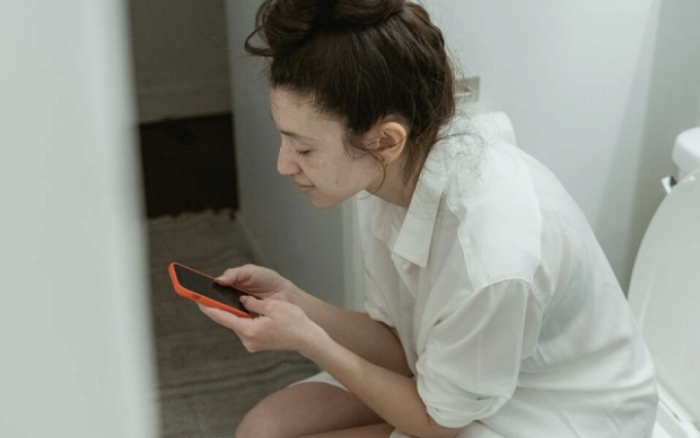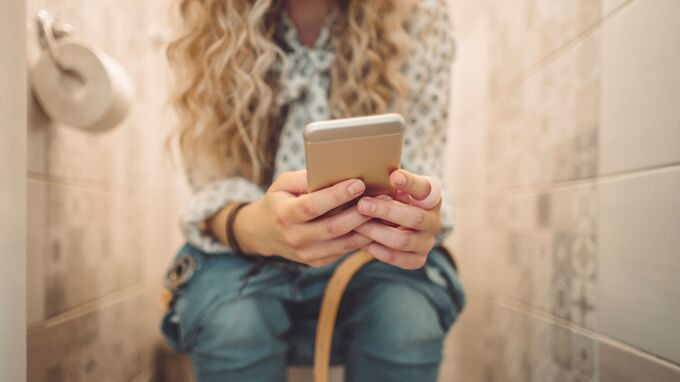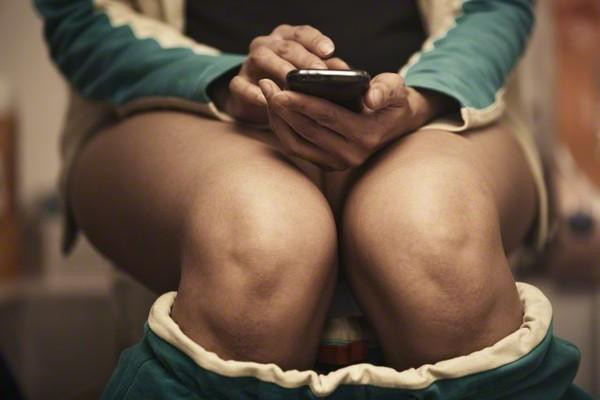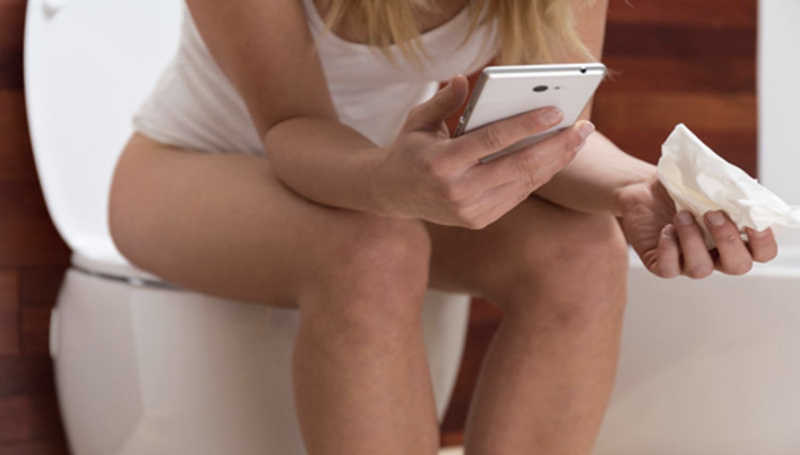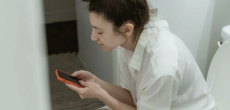Zing Muse – Using your phone in the WC seems harmless but spreads bacteria and raises hemorrhoid risk. Learn why experts say it’s time to leave it outside.
Using your phone in the WC increases exposure to bacteria like E. coli, raises hemorrhoid risk, and spreads germs through hand contact. The best fix: leave your phone outside, wash hands properly, and limit toilet time to under 10 minutes.
Do you bring your phone to the toilet?
If your answer is yes, you’re not alone. Surveys reveal that more than 70% of smartphone users admit to using their phones while in the bathroom.
Most see it as harmless — a few minutes to scroll social media, read news, or reply to messages.
But experts warn: this seemingly innocent habit could quietly harm your health, exposing you to bacteria, hemorrhoids, and even infections.
1. The perfect breeding ground for bacteria
Bathrooms are full of harmful microorganisms like E. coli, Salmonella, and Staphylococcus aureus. When you bring your phone inside, tiny water droplets released during flushing — known as aerosols — can spread bacteria into the air and onto surfaces, including your device.
A study by the University of London found that:
92% of phones tested carried bacteria, and 16% contained traces of E. coli, a bacteria commonly found in feces and linked to diarrhea and stomach infections.
Because we constantly touch our phones — and then touch our faces, food, and other items — our devices become mobile carriers of germs that can easily enter our bodies.
2. The “toilet scroll” that leads to hemorrhoids
Beyond hygiene concerns, using your phone on the toilet can physically harm your body.
According to research published in PLOS One (2024):
People who use their smartphones while sitting on the toilet have a 46% higher risk of developing hemorrhoids.
Why? Because the distraction causes you to sit much longer than necessary.
Prolonged sitting increases pressure on the anal veins, which can lead to hemorrhoids, fissures, and pelvic circulation issues.
Proctologists emphasize:
“The ideal toilet time should not exceed 5–10 minutes. Anything longer increases strain on the rectal veins.”
3. The unseen transmission from your hands to your phone
After using the toilet, many people wash their hands briefly — but immediately grab their phones again. This allows bacteria from toilet surfaces or door handles to transfer onto the screen.
Later, when you make a call or eat, those bacteria find their way back into your mouth or skin.
A University of Arizona study found that:
The average smartphone is 10 times dirtier than a toilet seat.
These germs can survive on surfaces for up to 48 hours, making your device a long-lasting host for pathogens.
4. A small habit with serious health consequences
Many think using a phone in the bathroom is “no big deal,” but in reality, it’s a gateway to multiple health issues, such as:
-
Digestive and urinary infections
-
Hemorrhoids and rectal disorders from prolonged sitting
-
Reduced bowel efficiency due to distraction
-
Cross-contamination among family members through shared surfaces
5. Simple ways to protect yourself
Experts recommend a few easy habits to keep your health (and phone) safe:
-
Leave your phone outside the bathroom. Use the time to truly relax.
-
Wash your hands thoroughly for at least 20 seconds with soap after using the toilet.
-
Disinfect your phone regularly using 70% isopropyl alcohol or antibacterial wipes.
-
Limit toilet time to under 10 minutes.
-
Close the toilet lid before flushing to minimize aerosol spread.
These small steps can significantly reduce bacterial exposure and protect your digestive health.
Don’t let your smartphone control your health
Bringing your phone to the bathroom might seem harmless, but studies confirm it’s a major hygiene mistake that can lead to long-term health risks.
Keep your phone out of the toilet zone — a simple change that can protect you from millions of invisible germs.
Take a break from scrolling, and let your body — not your screen — have your full attention for a few minutes each day.
The Healthy

